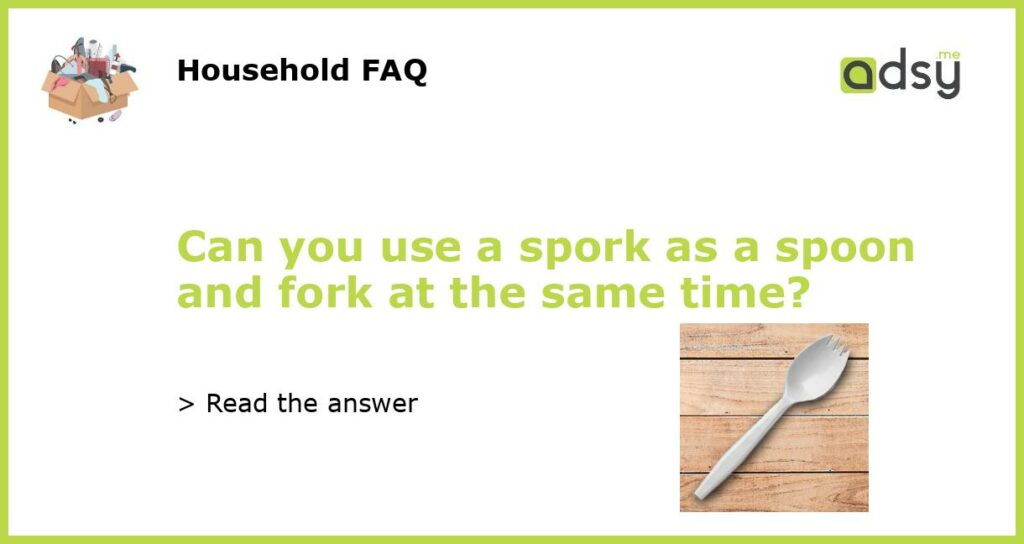Yes, a spork can be used as both a spoon and fork simultaneously
A spork is a hybrid utensil that combines the features of a spoon and a fork. It typically has a spoon-shaped bowl on one end and fork-like tines on the other end. This unique design allows the spork to be used as both a spoon and fork at the same time.
Function as a spoon
When used as a spoon, the spork’s spoon-shaped bowl is perfect for scooping up liquids, soups, and other foods that require a spoon to be consumed. The deep curve of the bowl allows you to hold a significant amount of food without it slipping off easily. Whether you’re eating yogurt, cereal, or soup, the spork can handle it all.
Function as a fork
On the other end of the spork, you have the tines that function as a fork. The tines are typically shorter and wider than those of a traditional fork, making it easier to pick up and stab food. This makes the spork a versatile tool that can handle both soft and solid food items.
Benefits of using a spork
The spork offers several advantages over using separate spoons and forks:
- Convenience: With a spork, you only need one utensil instead of two. This makes it especially practical for outdoor activities like camping, picnics, and backpacking, where saving space is essential.
- Efficiency: Using a spork allows you to switch back and forth between using a spoon and a fork without having to put down one utensil and pick up another. This can help streamline your eating experience.
- Portability: Due to its compact size, a spork can easily fit into your bag or pocket, making it easy to carry around wherever you go. This is particularly useful for people who bring their lunch to work or school.
- Sustainability: By using a spork, you reduce the need for disposable utensils, which can help decrease plastic waste and promote environmental sustainability.
Limitations of a spork
While the spork is a versatile utensil, there are some limitations to its functionality:
- Not ideal for cutting: The spork’s tines are not sharp enough to cut through tougher food items like meat or vegetables. If you need to cut food, you may still need a knife.
- Less effective for certain foods: The spork may not be as efficient for foods that require precise scooping or stabbing, such as rice or spaghetti. In these cases, using a separate spoon or fork may provide better control and ease of eating.
- Limited capacity: The spoon-shaped bowl of the spork may not hold as much food as a regular spoon, which could be a drawback if you prefer larger portions or need to eat quickly.






